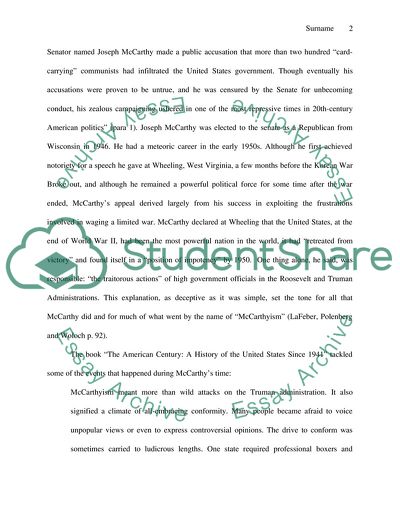Cite this document
(McCarthyism in the Early 50s Essay Example | Topics and Well Written Essays - 1750 words, n.d.)
McCarthyism in the Early 50s Essay Example | Topics and Well Written Essays - 1750 words. https://studentshare.org/history/1790680-in-what-ways-and-to-what-extent-did-mccarthyism-impact-upon-american-society-in-the-early-1950s
McCarthyism in the Early 50s Essay Example | Topics and Well Written Essays - 1750 words. https://studentshare.org/history/1790680-in-what-ways-and-to-what-extent-did-mccarthyism-impact-upon-american-society-in-the-early-1950s
(McCarthyism in the Early 50s Essay Example | Topics and Well Written Essays - 1750 Words)
McCarthyism in the Early 50s Essay Example | Topics and Well Written Essays - 1750 Words. https://studentshare.org/history/1790680-in-what-ways-and-to-what-extent-did-mccarthyism-impact-upon-american-society-in-the-early-1950s.
McCarthyism in the Early 50s Essay Example | Topics and Well Written Essays - 1750 Words. https://studentshare.org/history/1790680-in-what-ways-and-to-what-extent-did-mccarthyism-impact-upon-american-society-in-the-early-1950s.
“McCarthyism in the Early 50s Essay Example | Topics and Well Written Essays - 1750 Words”. https://studentshare.org/history/1790680-in-what-ways-and-to-what-extent-did-mccarthyism-impact-upon-american-society-in-the-early-1950s.


